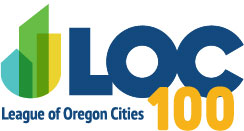LOC News
How Will ShakeAlerts Be Delivered in Oregon, and When?
The League of Oregon Cities is partnering with ShakeAlert®, the United States Earthquake Early Warning System, to inform members on earthquake risk in Oregon and what they can do to mitigate damage from earthquake shaking. So far, we have covered earthquake hazards in Oregon and earthquake preparedness, earthquake magnitude vs. shaking intensity, and how earthquake early warning (EEW) works. Let’s continue by talking about when EEW public alerting will be allowed in Oregon and how the public will receive an earthquake early warning alert.
For a refresher on how the ShakeAlert® Earthquake Early Warning System works, visit the September 25, 2020 LOC Bulletin issue.
When Will ShakeAlert be Released in Oregon?
Testing of the public alerting ShakeAlert is happening now in California and will be available in Oregon as soon as March 2021.
The ShakeAlert system in Oregon is currently operational, but is not yet being used for public alerting. Currently, the system is providing useful alerts to “Pilot Partners”, who internally use alerts to test notification of their employees or to test automated actions.
How Will You Receive an Earthquake Early Warning Alert?
ShakeAlert® is an early earthquake warning system that detects significant earthquakes quickly enough to alert people and automated systems seconds before shaking arrives. By providing the time until strong shaking arrives at a location, ShakeAlert can save lives and reduce injuries by giving people time to take a protective action like Drop, Cover, and Hold On, or moving away from hazardous areas.
During an earthquake, the USGS rapidly publishes earthquake magnitude, location, and shaking information as raw data. Approved USGS Technical Partners take this information and turn it into public alerts or trigger an automated action. Therefore, you may receive an earthquake early warning alert through a variety of mechanisms.
You may be alerted to shaking in your area by a cellphone app, by a federal, state, or county emergency alert push-notification on your phone, or by a public address system in a building or on the street.
You will benefit from ShakeAlert without your immediate knowledge as well. Current USGS-Approved Technical Partners are using the USGS ShakeAlert data to trigger a sequence of automated actions upon receiving an alert. Automated actions provide the time needed to put critical infrastructure in “safe” mode so it can tolerate strong shaking and get up and running once shaking stops. ShakeAlert Technical Partners are working to develop more and more uses for ShakeAlert. Examples of current automated actions include:
- throttling water utility valves to prevent emptying of reservoirs full of clean drinking water
- opening firehouse doors so fire trucks are not trapped behind stuck doors and instead are ready for immediate deployment
- activating backup generators at hospitals to ensure continued service and care
- slowing trains to prevent derailment and injury
- limiting access to bridges to prevent cars from entering seismically vulnerable bridges and tunnels
More Information About Earthquake Early Warning Alerts
Earthquake Early Warning alerts will be specific to your location - or your last known location. For the sake of speed, the ShakeAlert algorithm must make a quick estimate of shaking intensity over a large area. The actual shaking you experience may be more or less intense than predicted. On rare occasions, you may experience a false alert or a missed alert.
Depending on a number of factors, an alert may reach you up to tens of seconds before you feel shaking, or it may reach you during or after you feel shaking. If the earthquake occurs directly below you there is not enough time to measure and process a warning before shaking arrives at your location. In general, there is a no-alert zone if you’re too close to the source - the sensors feel shaking at the same time you do. Finally, it’s important to remember that ShakeAlert algorithms and data transfers between seismometers and data centers take time to process. This adds delay time to the warning, which in some cases could result in late alerts. However, ShakeAlert Technical Partners are required to relay alerts to their customers in 5 seconds or less after receipt of the raw ShakeAlert data from the USGS.
If an earthquake is especially small, you may feel shaking without any notification. Alerts must meet certain minimum thresholds before they are sent out to the public. Those thresholds are defined by the earthquake's magnitude and the shaking intensity specifically at your location, and must be deemed as potentially damaging. If an earthquake is small and not expected to cause damage, even if it is expected to produce shaking, a ShakeAlert will not be generated. USGS made this decision to reduce the potential personal anxiety from “over-alerting”.
Lastly, if you feel an earthquake or get an earthquake early warning alert immediately “Drop, Cover, and Hold On.” Get low to the ground, cover your head and neck, and hold onto a sturdy table leg if possible. (visit the October 9, 2020 LOC Bulletin issue for more information)
With publicly available earthquake early warning alerts on the horizon, it’s time to start thinking about what you do next. How can you communicate ShakeAlert to your community? Can you invest in automated alerts? How will you use the time provided to you before shaking starts to take effective action? We’ll answer all of these questions in our next two installments via the LOC Bulletin.

